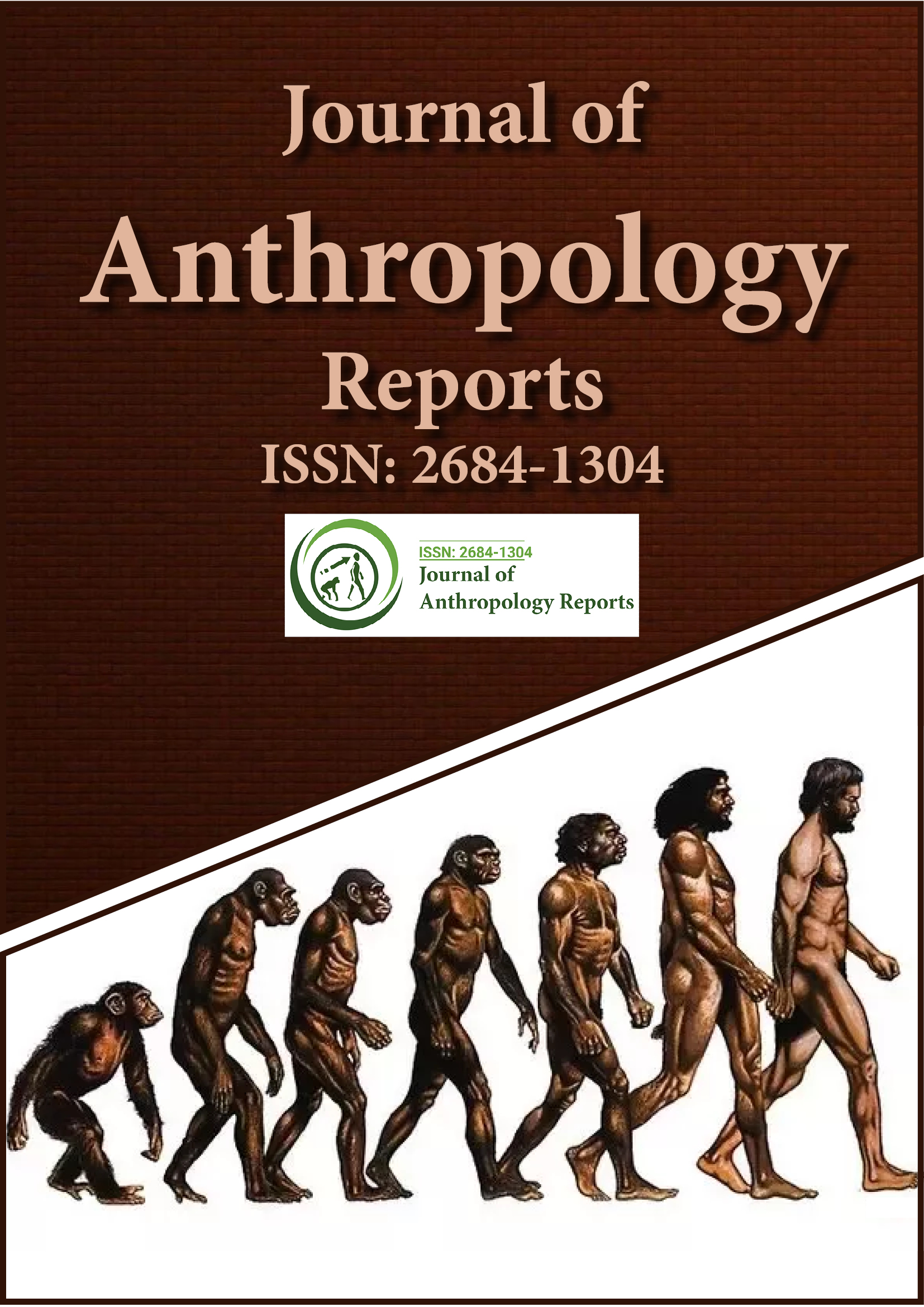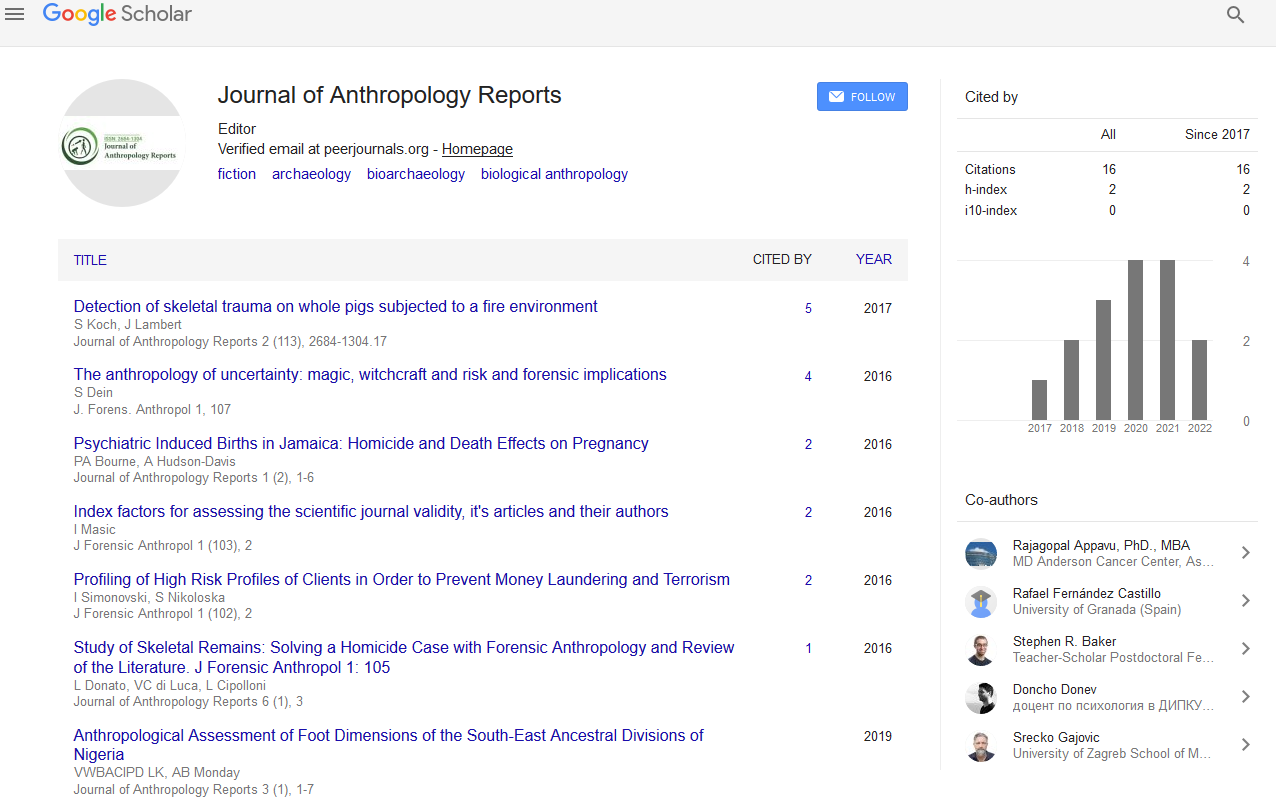Indexed In
- RefSeek
- Hamdard University
- EBSCO A-Z
Useful Links
Share This Page
Journal Flyer

Open Access Journals
- Agri and Aquaculture
- Biochemistry
- Bioinformatics & Systems Biology
- Business & Management
- Chemistry
- Clinical Sciences
- Engineering
- Food & Nutrition
- General Science
- Genetics & Molecular Biology
- Immunology & Microbiology
- Medical Sciences
- Neuroscience & Psychology
- Nursing & Health Care
- Pharmaceutical Sciences
Perspective - (2023) Volume 6, Issue 1
Unravelling the Complexities of Criminal Cases: A Comprehensive Guide
Antti Kotiaho*Received: 03-Feb-2023, Manuscript No. JFA-23-20631; Editor assigned: 07-Feb-2023, Pre QC No. JFA-23-20631 (PQ); Reviewed: 24-Feb-2023, QC No. JFA-23-20631 (QC); Revised: 02-Mar-2023, Manuscript No. JFA-23-20631 (R); Published: 10-Mar-2023, DOI: 10.35248/2684-1304.23.6.155
Description
Forensic anthropology and forensic archaeology are two important disciplines that are used in criminal cases to provide vital evidence and information that can be used to solve a case. These two fields are often used together to help provide detailed insight into the physical evidence that is found at a crime scene. Forensic anthropology is the study of the human skeleton in order to analyze and interpret the evidence that is left behind. It is used to determine the age, race, sex, and stature of the victim, as well as any injuries or trauma that may have occurred prior to or at the time of death. Forensic anthropologists can also provide information about the cause of death, as well as any evidence of prior injuries or illnesses.
Forensic archaeology is a field of study that focuses on the recovery and analysis of artifacts that are found in association with a crime scene. This includes items such as clothing, weapons, and tools that may have been used in the commission of a crime. The role of forensic anthropology and forensic archaeology in criminal cases for forensic archaeologists are also trained to examine soil and sediment samples for the presence of human remains or other evidence that may be related to a crime. These two disciplines are essential in criminal investigations, as they provide detailed information that can be used to piece together the events leading up to a crime. By combining the evidence provided by both disciplines, investigators can gain a better understanding of the circumstances surrounding a case and the potential perpetrators.
The key to a successful criminal case lies in the correlation of physical evidence with testimonies. In order to build a strong case, it is essential to match the physical evidence collected from the crime scene with testimonies of witnesses or suspects. This correlation helps to confirm or deny the veracity of a suspect’s story and can be used to disprove claims of innocence. Physical evidence includes items such as fingerprints, DNA samples, documents, clothing, weapons, and other objects that are linked to a suspect or crime scene. To ensure that such evidence is correctly correlated with testimonies, it is important to document its chain of custody. This includes recording when the evidence was taken from the crime scene, who took it, where it was stored, and who had access to it. By maintaining a chain of custody, it is easier to demonstrate that the physical evidence collected was not tampered with and can be used as reliable evidence in a criminal case. Furthermore, it is essential to question witnesses and suspects to verify their testimony. By asking follow-up questions and cross-referencing answers, investigators can determine if a story is true or false. Furthermore, evidence can be used to corroborate or disprove a suspect’s story.
In conclusion, correlating physical evidence with testimonies is essential for building a strong criminal case. By maintaining a chain of custody and verifying testimonies, investigators can ensure that the physical evidence collected is reliable and can be used to prove or disprove a suspect’s story.
Conclusion
The conclusion, it is essential to understand the complexities of criminal cases to ensure a fair and just resolution. By studying the perspective article intricacies of the criminal law, individuals can better prepare themselves for their legal proceedings. By understanding the fundamentals of criminal law, individuals can arm themselves with the knowledge to protect their rights and seek the best possible outcome for their case. This comprehensive guide has provided an overview of the essential components of criminal law, as well as strategies and tips to help individuals navigate their way through the criminal justice system. With the right resources and information, individuals can better understand their legal rights and understand the complexities of criminal cases.
Citation: Kotiaho A (2023) Unravelling the Complexities of Criminal Cases: A Comprehensive Guide. J Anthropol Rep. 6:155.
Copyright: © 2023 Kotiaho A. This is an open-access article distributed under the terms of the Creative Commons Attribution License, which permits unrestricted use, distribution, and reproduction in any medium, provided the original author and source are credited.

